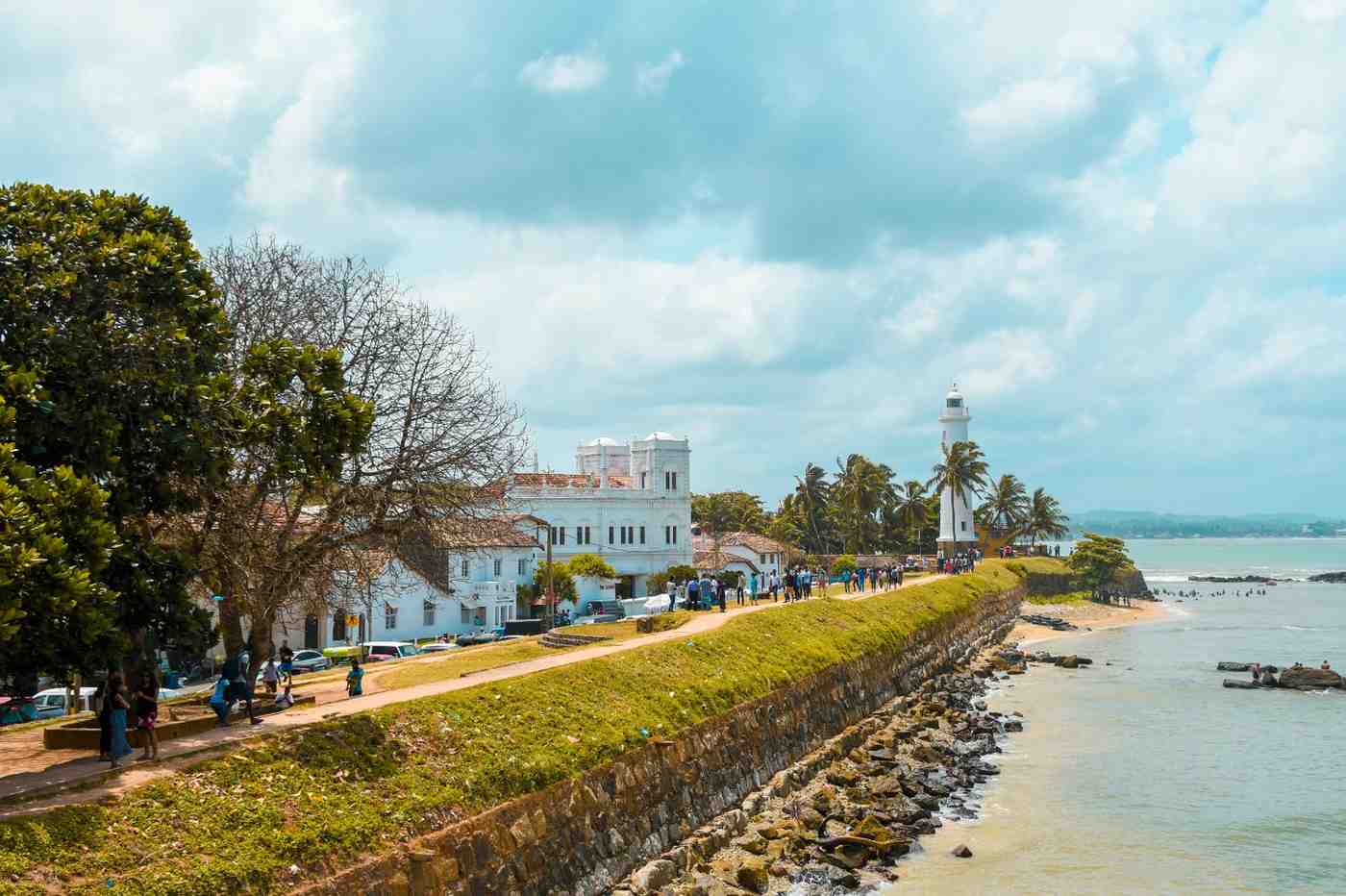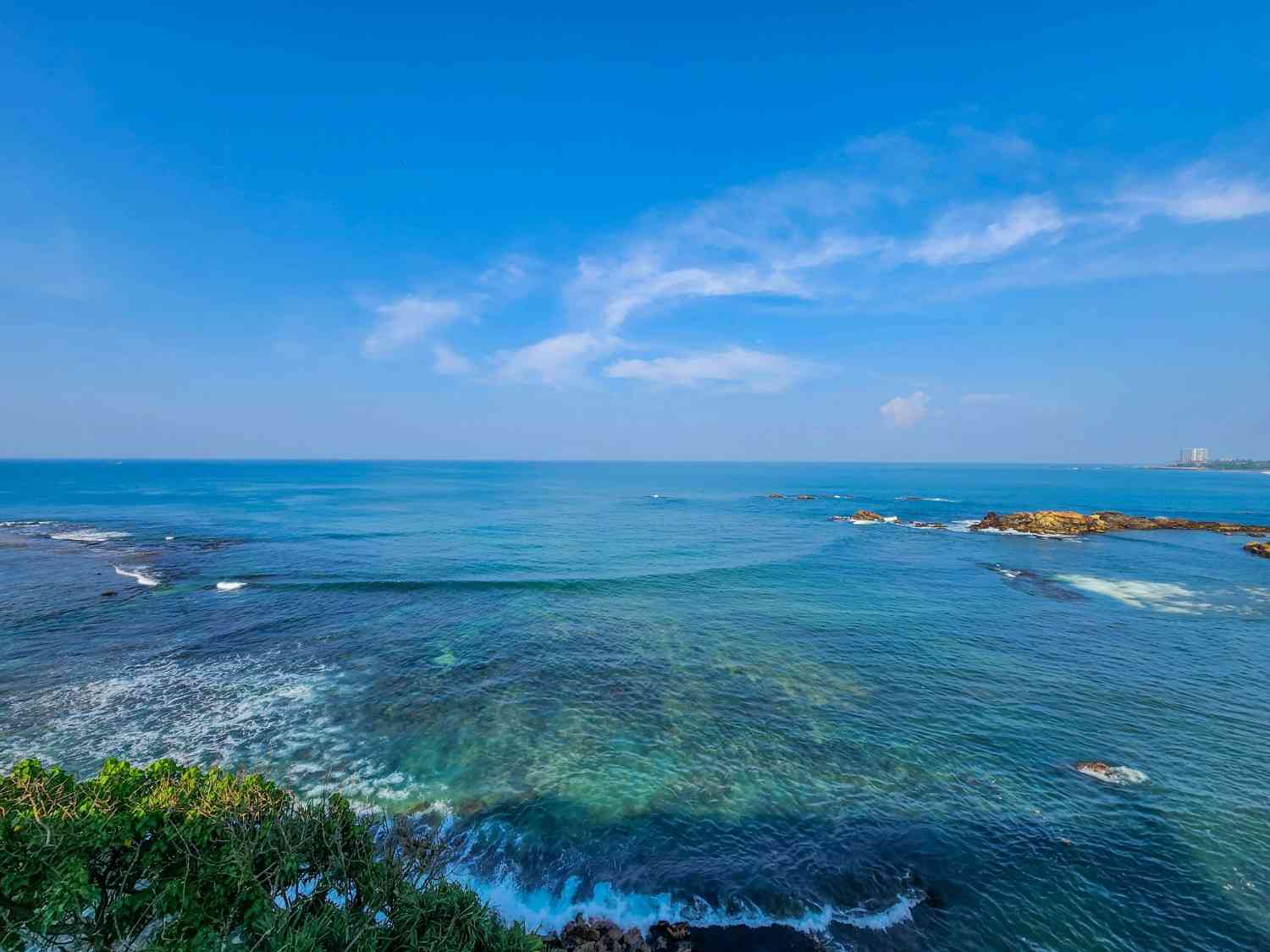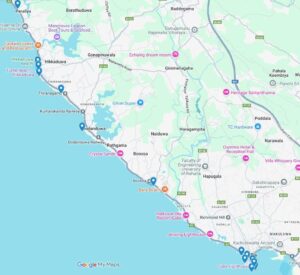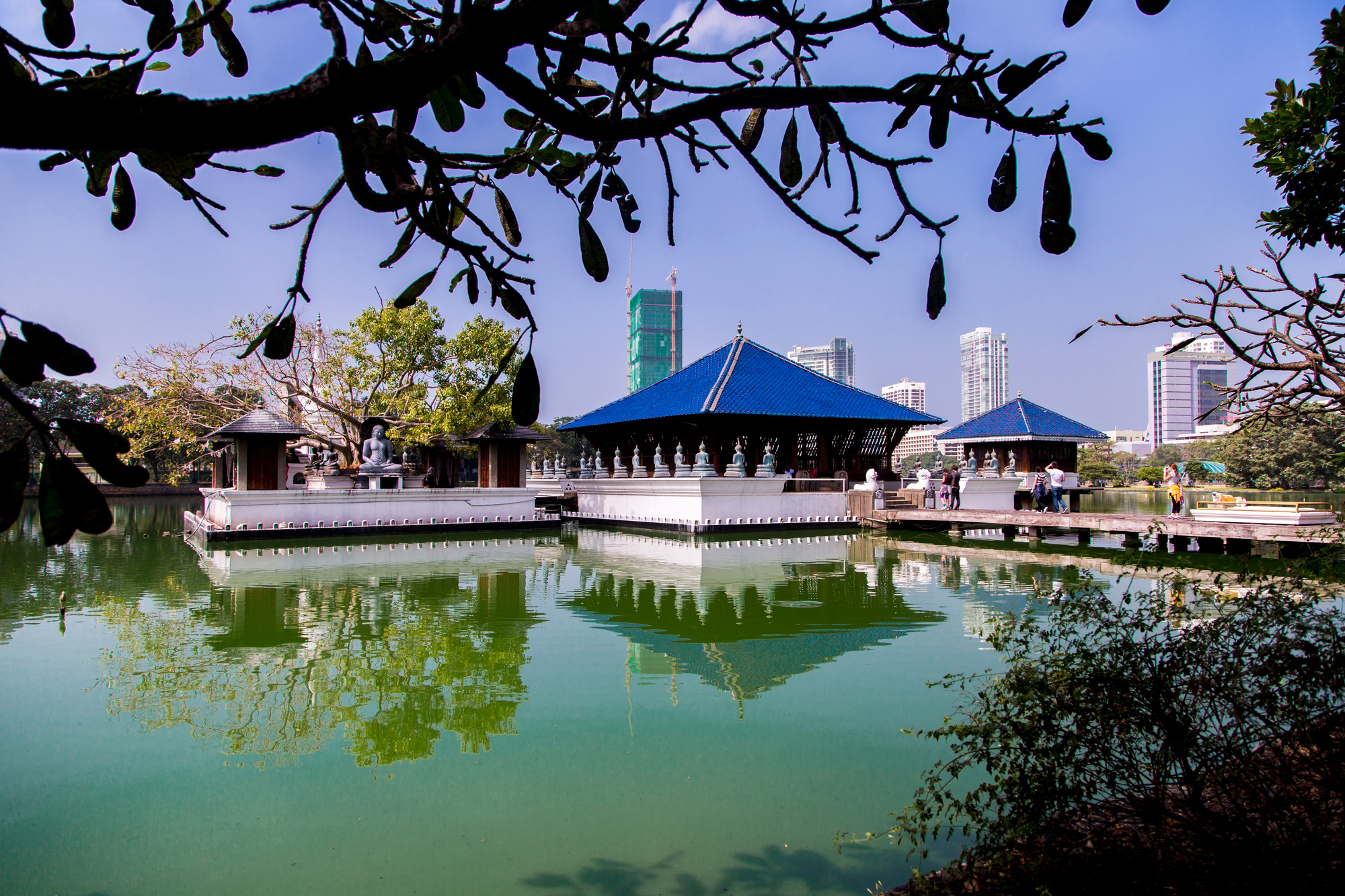Introduction
Located along the southwestern coast of Sri Lanka, Galle Fort stands as a powerful symbol of the island’s rich history and cultural fusion. As a designated UNESCO World Heritage Site, it offers visitors a remarkable combination of historical depth and stunning seaside charm. Walking through its ancient walls, one can truly appreciate the serenity that envelops the fort, which has withstood the test of time since its initial construction by Portuguese colonists in the 16th century and subsequent enhancements by the Dutch.
The charm of Galle Fort lies not just in its historical structures, such as the iconic lighthouse and well-preserved ramparts, but also in the picturesque vistas of the Indian Ocean that frame its boundaries. Here, time appears to stand still; the gently crashing waves against the coral walls create an ambience that invites visitors to relax and absorb the enchanting surroundings. The colorful architecture, showcasing a fusion of colonial and local influences, adds to the vibrant atmosphere, making strolls along the ramparts a delightful experience during sunset.
As visitors meander through the narrow streets, they are greeted by a lively mix of boutique shops, art galleries, and quaint cafes, all housed within buildings that echo the fort’s storied past. This unique environment serves not only as a reminder of Galle Fort’s historical journey but also as a lively hub of contemporary culture. Galle Fort’s combination of history and natural beauty creates a multifaceted destination that beckons travelers to explore its many layers and discover the stories that have shaped this remarkable location.
History of Galle Fort
Galle Fort, a UNESCO World Heritage Site, stands as a testament to the rich historical tapestry of Sri Lanka. Originally constructed by the Portuguese in 1588, the fort served as a strategic maritime hub due to its prime location on the southern coast of the island. Its establishment marked the beginning of European colonial influence in the region, laying the foundation for its subsequent transformations. In 1649, the fort was extensively fortified by the Dutch, who recognized its strategic importance for trade and defense, further enhancing its intricate architecture with robust walls and bastions to withstand potential invasions.
Over the centuries, Galle Fort evolved into not just a military stronghold but also a vital administrative center. It became a melting pot of cultures, blending the influences of the Portuguese, Dutch, British, and local Sri Lankan communities. Each of these cultures left an indelible mark on the fort’s architecture and urban fabric, seen in the unique blend of European and South Asian styles that characterize the fort today. The presence of churches, traditional Sri Lankan homes, and remnants of colonial buildings speak volumes to the multicultural history embedded within the fort’s walls.
The fort’s resilience was dramatically showcased during the 2004 tsunami, which devastated many coastal areas of Sri Lanka. Remarkably, Galle Fort sustained minimal damage due to its formidable architecture and design. This event underscored not only the strength of the structure itself but also its significance as a historical landmark that has withstood the tests of time. Today, as visitors explore its winding streets, they can appreciate the layers of history that Galle Fort represents, making it an essential destination for those seeking to understand the complex narratives of Sri Lanka’s past.
Exploring the Fort

Galle Fort, a UNESCO World Heritage site, is a remarkable destination that encapsulates centuries of history with its stunning architecture and vibrant atmosphere. As one strolls along the cobbled streets, the first landmark to capture attention is the iconic clock tower. Erected in 1883, this Gothic structure serves not only as a timekeeper but also as a reminder of the colonial era, harmonizing the Mediterranean influences with traditional Sri Lankan elements. Visitors are often struck by its elegant yet robust design, which embodies the fort’s rich historical narrative.
Next, the Galle Lighthouse stands majestically at the edge of the fort. Originally built by the Portuguese in 1848 and later reconstructed by the British in 1939, this towering beacon offers breathtaking views of the Indian Ocean. The lighthouse is not just a navigational aid; it symbolizes the fort’s maritime heritage, acting as a guardian of the harbor and serving as a picturesque backdrop for photographs. The sheer beauty and historical significance of this landmark make it a must-visit when exploring Galle Fort.
Within the fort’s walls, visitors will find the Dutch Reformed Church, an architectural marvel dating back to the 18th century. Its whitewashed walls and ornate wooden interiors tell stories of the Dutch colonial presence in the region. Nearby, All Saints’ Church offers a serene space for contemplation. Built in the 19th century, this church is an exquisite example of Gothic Revival architecture, where its arched windows and high ceilings create an enchanting atmosphere.
Finally, the Old Dutch Hospital has undergone a transformation from a colonial health facility to a bustling hub filled with shops and eateries, offering an ideal spot to unwind. The combination of rich culinary experiences and historical surroundings enriches the Galle Fort experience, allowing one to indulge in both history and gastronomy. Exploring these significant landmarks not only deepens understanding of Galle’s multicultural heritage, but also creates memorable moments within this captivating historic fortress.
Cultural Heritage and Architecture
Galle Fort, a UNESCO World Heritage site, stands as a testament to the intricate tapestry of cultural heritage and architectural brilliance shaped over several centuries. The fort’s architecture is an admirable mélange of Dutch, Portuguese, and British influences, each contributing distinct elements to the overall aesthetic appeal. As visitors wander through the fort’s cobblestone streets, they encounter a variety of styles, from the utilitarian design of the old warehouses to the ornate façades of colonial houses that demonstrate the craftsmanship of the time.
One of the most striking features of Galle Fort is its massive ramparts. Originally built to protect the town from invasions, these fortifications now offer breathtaking views of the Indian Ocean. The blend of solid masonry and carefully planned design reflects the strategic military thinking of the past while providing an inviting atmosphere for tourists today. The bastions along the fort’s perimeter boast unique architectural details such as cannons dating back to the 17th century, which serve as silent witnesses to the many historical confrontations faced by the fort.
Within the fort, the serene Dutch Reformed Church and the alluring All Saints’ Church exemplify the religious syncretism present in the area, showcasing how different communities have fused their beliefs over time. The vibrant color schemes of buildings along with intricate woodwork reveal the artistic influences that have permeated through the ages. Each structure has its own story, often connected to the families who once lived there, reflecting the rich history of colonial life in Galle.
This architectural journey not only showcases the beauty of Galle Fort but also invites reflections on the lives of those who once inhabited these spaces. The stories bound within these walls provide an enriching layer to the fort’s cultural heritage, enabling visitors to appreciate the significance of this remarkable site on both historical and personal levels.
Modern-Day Highlights

Galle Fort, with its rich historical backdrop, has seamlessly integrated modern vibrancy into its time-honored charm. Visitors and locals alike are drawn to the quaint cafes that dot the fort’s cobblestone streets. These establishments offer not just a peaceful respite but also a taste of local and international flavors, showcasing an array of culinary options. From traditional Sri Lankan dishes to modern café fare, the food scene within Galle Fort caters to diverse palates while maintaining a casual, welcoming atmosphere.
In addition to dining options, Galle Fort is home to an eclectic mix of boutique shops that feature unique handicrafts, clothing, and souvenirs. Each shop tells a story, often highlighting locally-made products that reflect the craftsmanship of the region. Tourists can find everything from intricate jewelry to artisanal goods, all of which contribute to the local economy while preserving cultural heritage. This emphasis on local artistry adds to the fort’s appeal, drawing shoppers eager to find distinctive items as mementos of their visit.
Moreover, art galleries have proliferated throughout Galle Fort, playing a crucial role in its contemporary cultural landscape. These galleries showcase the works of both local and international artists, offering visitors a glimpse into the creative talents that thrive within this historic space. Exhibitions often highlight themes that resonate with the fort’s history, providing a thought-provoking juxtaposition of past and present. This merging of art with history enriches the experience for those who visit, offering layers of understanding about the region’s identity.
The coexistence of these modern attractions within the historical framework of Galle Fort makes it a unique destination. The dynamic cultural blend that characterizes this location draws a diverse crowd, fostering a community where history and modernity not only coexist but enhance one another, creating an engaging experience for all who walk its storied paths.
Visiting Galle Fort: Practical Tips
Galle Fort, a UNESCO World Heritage site, beckons travelers with its rich history and stunning coastal views. To truly experience this gem in Sri Lanka, timing your visit is crucial. The best period to visit Galle Fort is from December to March, when the weather is mild and dry, providing ideal conditions for exploration. However, if you prefer fewer crowds, consider visiting during the shoulder months, where you can enjoy a calmer atmosphere while still experiencing the Fort’s charm.
Getting to Galle Fort is straightforward. The most convenient option is to reach Galle by train or bus from Colombo, with frequent services making the journey accessible. Upon arrival, the Fort is within walking distance from the bus and train stations. For those driving, parking can be found at the entrance of the Fort; however, it can become congested during peak times, so arriving early is recommended.
When planning what to wear, comfort is key. Light, breathable clothing is advisable due to the warm climate, and comfortable shoes are a must since you will spend considerable time walking on uneven cobblestones. To protect against the sun, a wide-brimmed hat, sunglasses, and sunscreen are also recommended.
For a well-rounded itinerary, visitors can explore the Fort in either a day or over a weekend. Start with a leisurely morning stroll along the ramparts while soaking in panoramic ocean views. Do not miss visiting the iconic Lighthouse and the Dutch Reformed Church, both significant historical landmarks. For cultural enthusiasts, the National Maritime Museum offers fascinating insights into the region’s nautical heritage. Indulge in local cuisine at one of the Fort’s charming cafes or restaurants to recharge. A weekend visit allows ample time for relaxation at nearby beaches, completing the itinerant experience.
Local Cuisine and Dining Experiences
Galle Fort, with its rich historical backdrop and stunning coastal scenery, offers a vibrant culinary landscape that captures the essence of local flavors. The dining experiences within the fort reflect the fusion of influences from Sri Lankan traditional cuisine, colonial heritage, and contemporary culinary practices. From casual eateries to high-end restaurants, visitors can find a variety of options that cater to diverse tastes and preferences.
A must-try dish when visiting Galle Fort is the ‘hoppers’ which are bowl-shaped pancakes made from fermented rice flour. Often served with an array of accompaniments, including curries and sambols, hoppers embody the unique flavors of Sri Lankan cuisine. Another local favorite is ‘kottu roti,’ a stir-fried dish made from chopped roti, vegetables, and an assortment of proteins, all seasoned with aromatic spices. This dish showcases the vibrant street food culture of the region and is often found in local eateries.
For those seeking a more upscale dining experience, establishments such as the iconic Fort Printers and the chic murals at The Tuna & The Crab offer exquisite menus featuring fresh seafood and local produce. Each dish is crafted to highlight the natural flavors of the ingredients, providing diners with a unique taste of the area. Many restaurants also boast spectacular views of the ocean, allowing guests to savor their meals against a backdrop of breathtaking coastal beauty, enhancing the dining experience.
In addition to the remarkable food, Galle Fort’s dining scene is characterized by its warm hospitality and inviting atmosphere. Visitors are encouraged to explore not just the popular dining spots but also hidden gems scattered throughout the fort. Each restaurant encapsulates the local culture and provides an opportunity to engage with the flavors of Galle, making it an essential part of any visit to this historic site.
Cultural Events and Festivals
Galle Fort, a testament to centuries of history and cultural significance, hosts a wide array of events and festivals that reflect its rich heritage and vibrant community spirit. Among the most notable is the Galle Literary Festival, an annual gathering of authors, poets, and passionate readers. This event transforms the historic surroundings of the fort into a literary hub, featuring discussions, book launches, and workshops. Participants have the opportunity to engage with prominent literary figures and partake in the revitalization of Galle’s cultural landscape.
In addition to the literary festival, Galle Fort also showcases local art exhibitions that highlight the talents of Sri Lankan artists. These exhibitions not only promote creativity but also serve as a platform for cultural exchange, drawing visitors from various backgrounds. Art enthusiasts can explore the diverse works displayed in galleries and public spaces, which often focus on themes inspired by the fort’s history and natural beauty.
Another significant aspect of the fort’s cultural life is its traditional celebrations, such as the Sinhala and Tamil New Year, Vesak, and Eid al-Fitr. These festivities bring together residents and visitors alike, facilitating a genuine sense of community. During these celebrations, the fort comes alive with colorful decorations, street food stalls, and cultural performances, including traditional music and dance that reflect the island’s rich heritage.
Through these cultural events and festivals, Galle Fort remains a dynamic place where history meets creativity. The continuous engagement of the community in these activities enhances the fort’s cultural fabric and cements its status as a landmark of both historical significance and vibrant present-day life. Events throughout the calendar year demonstrate the fort’s commitment to preserving its traditions while also embracing modern influences.
Conclusion: A Living Legacy
In essence, Galle Fort stands as more than just a remnant of the past; it is a vibrant testament to Sri Lanka’s rich history, diverse cultures, and the enduring spirit of its community. As one approaches its weathered walls, there exists an invitation to embark on a journey through time, where each stone whispers tales of periods long gone. The fort’s architecture, influenced by Dutch, Portuguese, and British styles, enhances the unique narrative that intertwines with the daily lives of the residents who call this place home. This seamless blend of the historical and contemporary allows visitors to experience Galle Fort as a living organism, constantly evolving yet firmly anchored in its heritage.
The fort’s scenic coastal views also amplify its allure, with the Indian Ocean offering a picturesque backdrop that complements the landscape of narrow streets and charming colonial buildings. As travelers meander through the fort’s pathways, they encounter not only remarkable structures but also bustling cafes, artisanal shops, and local artisans, contributing to an atmosphere that is both dynamic and welcoming. This vibrant community spirit enhances the fort’s status as a cultural hub, where art and music thrive, further enriching its legacy.
Ultimately, Galle Fort invites exploration and appreciation. It encourages visitors to engage with its history, immerse themselves in its culture, and connect with the community that nurtures it. For anyone seeking a destination that encapsulates a blend of history and natural beauty, Galle Fort promises an unforgettable experience. One can only hope that future generations will continue to cherish and preserve this splendid legacy, ensuring that the stories and traditions that define Galle Fort resonate throughout time.
Galle Map – Hold the pins to uncover colonial forts, secret beaches, and cozy cafes at a glance.




